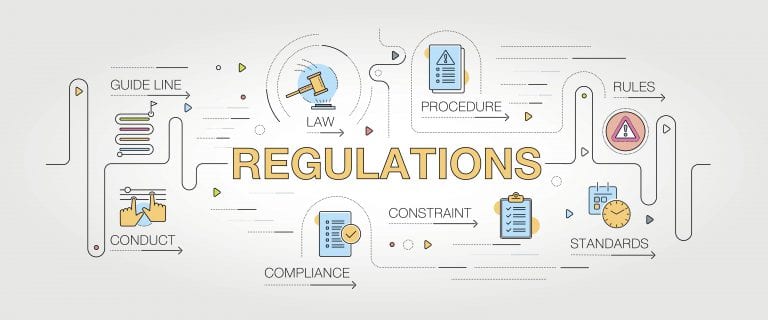As more and more companies have migrated to a virtual model, effective delivery of virtual training is important.
Virtual training is convenient; however, one can easily overlook the crucial factors that can mean the difference between facilitating virtual training and facilitating a successful one.
Since 2011, Quality Contact Solutions has delivered training in a virtual environment. We’ve ironed out the wrinkles and determined what’s been the most successful in information delivery and retention.
10 Best Practices for Delivering Virtual Training
“It’s go time. Training is over. It’s time to put everything I’ve learned into action. Can I do this? Do I have what it takes?”
These are just a few of the thoughts we’ve all had on our first day after training for a new position. The unspoken question, though, is always, “Was my trainer prepared to help me learn what I will need to succeed?” While this is nothing new, the latest trend in training pertains to the environment.
With more employees working remotely, understanding how to deliver training virtually is more relevant now than ever before.
Virtual training offers unique opportunities. Of course, the apparent flexibility of people attending from multiple locations makes coordinating and scheduling more manageable, but a virtual environment isn’t without its challenges. Read on for 10 best practices to keep your virtual training on track.
1. Video Conferencing Service
Instead of the traditional classroom training projector or large screen monitor to display training materials and slides, it’s almost impossible to conduct a successful virtual training without using a video conferencing service. WebEx, Zoom, and GoTo are some of the recognizable names in the industry.
Some services offer features like passing your mouse, limiting interruptions by providing chat features, or manually muting that heavy mouth breather (we all know who they are). Of course, typically, the more features you need, the more expensive the service is.
It’s crucial to find a balance between budget and having the tools you will need and utilize.
2. Conference Line
Most video conferencing services will have audio conferencing available. This feature can seem to eliminate the need for an independent conference line, but this couldn’t be further from the truth.
Technical difficulties on behalf of attendees can eat up enormous amounts of time. From mute malfunctions to pesky pop-up authorization screens, anything you can do to simplify the process of communicating with you is paramount. There’s nearly nothing more simplistic than dialing the phone and entering a conference pin.
3. Instant Messaging/Chat
Verbal communication is not the sole means of communication in the virtual environment. Instant messaging/chat is an essential piece of virtual training.
Most video conferencing services have IM and chat as a standard feature. Understandably, chat messages can be a distraction to training; some video conferencing services allow attendees to message the presenter directly.
Chats can be used for pop quizzes or “temp checks” of attendees to ensure everyone comprehends the subject matter. It’s also a safe place for those who don’t feel comfortable asking questions in front of a group to reach out with questions without interrupting the group.
4. Screen & Audio Share
The traditional training environment allows new employees to see and hear existing employees conduct their routine activities in real life. In the virtual training environment, this can be a challenge.
While one can demonstrate the usage of systems and play recordings for new employees, most people must see and hear a real-life situation. Enabling a new employee to see and listen to what they’ve learned put into practice by a tenured peer is one thing that cannot be overlooked.
5. Participation & Temp Checks
Any successful trainer will tell you how important it is to “work the room” and focus on those attendees who are distracted by directing a question to them or standing close to them to help draw their attention back. This is one of the hardest things to accomplish in virtual training.
Ask lots of questions! But while doing so, unpredictably ask different attendees each time so everyone is on their toes. You can also ask questions and have each attendee message you privately so everyone can answer.
6. Role-playing
Role-playing is the best way to help someone get their feet wet in a new situation. This will help new employees get past the nerves of beginning their new position and avoiding the potential mistakes they may make.
Every training will have at least one participant afraid of role-playing in front of a group, and it is a necessary evil. Try to give everyone a chance to have their turn.
Maybe offer an option to work with you one on one if necessary, but practice makes perfect, and you can’t expect a new employee to succeed without preparation in a safe environment where you can coach them.
7. Know Your Technology
Of course, knowing the content of the training you’re conducting is a no-brainer. The factor to consider in virtual training is knowing your technology, as well.
From which web browser to use, which button to click, to “all I see is a little circle spinning. What do I do?” as a virtual trainer, you are IT by necessity if not by choice. Make sure to research your application’s usage on different web browsers, their limitations, and system requirements such as updated Adobe or Java.
Know your applications like the back of your hand, and be prepared to prove it! Inevitably, every virtual training has at least one technical difficulty. The key is to know how to fix it quickly to diminish the downtime for the rest of the class and give more time to focus on the training at hand.
8. Icebreakers
Icebreakers are a fun and exciting way to get to know each other in any training environment, but they are exponentially more important in virtual training.
While in traditional training environments, attendees spend time during breaks to socialize and get to know one another, it’s hard to do that in the virtual training environment.
As it’s sometimes hard to identify with a co-worker by voice alone, getting creative with different icebreakers can help employees identify with each other and feel more comfortable working as a team throughout the training.
Icebreakers should be scheduled for the beginning of training and after an extended break. Have a couple of other ideas in mind (for more extended training) to use after heavy detail-oriented segments to help break up and transition to the next subject.
9. Get Them Hands-On
In the virtual training environment, one of the primary keys to success is getting them hands-on early and frequently, especially when it comes to learning systems. Most people don’t fully feel comfortable until they can navigate through the systems themselves.
Repetition is fundamental in learning systems, and it will allow attendees to ask for help with things they didn’t know. As the old proverb says, “those who waste their time in idleness or in a non-productive manner are easily misled,” which is even more so the case in virtual training.
Even the most honest and devoted attendee might get the urge to sneak away if they aren’t missed. Getting the attendees hands-on as much as possible will help mediate this risk.
10. Nesting
Virtual training, like traditional on-site training, should not end in the classroom.
As a virtual trainer, it is easy to pick up and leave when the training is done. To ensure a new employee’s success, it is essential to develop a nesting process.
A new employee must begin their new tasks with good habits. Objectivity is key. As a trainer, it’s easy to get in the mindset of “I can help anyone succeed” or “I’ve invested so much time training.”
The nesting phase is likely the last chance to identify someone who will not make it and, conversely, give someone the extra coaching they need to succeed.
Do your research on technologies you can use to facilitate the needs of your virtual training. Experiment with different ideas and methodology, but above all else, make it fun and engaging. Just remember, it’s better to train an employee and lose them than not to train them and keep them!
Ryan Apodac is responsible for training at Quality Contact Solutions. With a background of more than a decade in sales, Ryan is passionate about developing and delivering training that ultimately results in improved performance for client programs. He can be reached at ryan.apodac@qualitycontactsolutions.com or 516-656-5127.









